SPE-59 ★ Spear-Spiel ▶ Der Ritter Sport Fußball-Knips-Cup
Attributes
- full title • Der Ritter Sport Fußball-Knips-Cup
- full title translated to English • The Ritter Sport Football (Soccer) Snap Cup
- by • Spear-Spiel of Stuttgart, West Germany (Spear Games)
- language used • German
- publisher catalog number on game • 26500
- date • 1974
- date source • email from Bianca Kulik of the Ritter Sport Archives to Rick Tucker on 25 April 2023
- intellectual property markings • none
- cardboard box dimensions • 29 1/2″ wide, 4 3/4″ high, 1 3/4″ deep
- rules • folding trifold leaflet (6 printed sides, orange paper)
- game type • tiddlywinks
- keywords • football – soccer – sport – chocolate
- AGPI Game ID • G-37848
- Tucker Tw ID • SPE-59
- updated • 28 April 2024
Publisher
The Ritter Sport company of Germany (formerly, West Germany) has produced chocolate and sugar confectionery since 1912; chocolate wrappers are depicted on the aprons of this game.
- website • https://www.ritter-sport.com/en
- company history • https://www.ritter-sport.com/en/history
Images
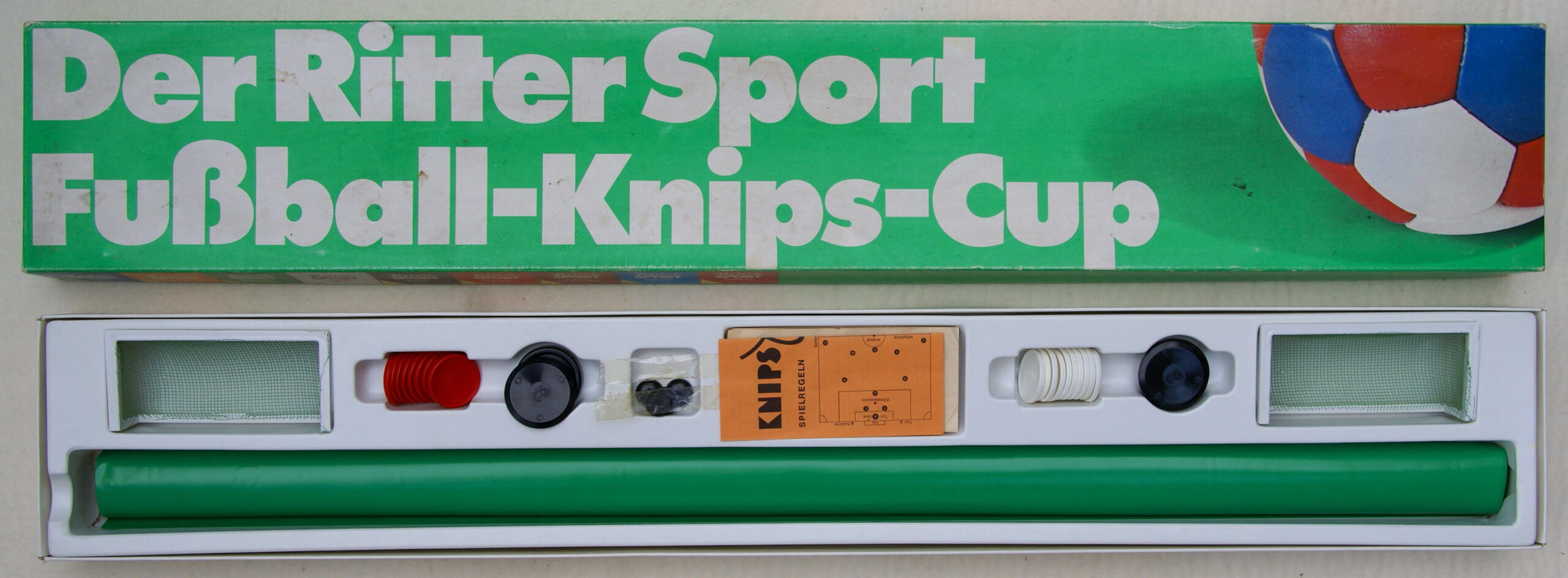
“Ritter Sport” is a brand of chocolate products sold by the Alfred Ritter company. The long aprons of this game have rectangles in various colors of 9 varieties of Ritter Sport chocolates: “Nugate”, “Sahne + Mocha”, “Marzipan Pfefferminz”, “Joghurt”, “Mocca”, “Marzipan”, “Vollmilch Trauben-Nuß”, “Vollmilch”, and “Halbbitter”.

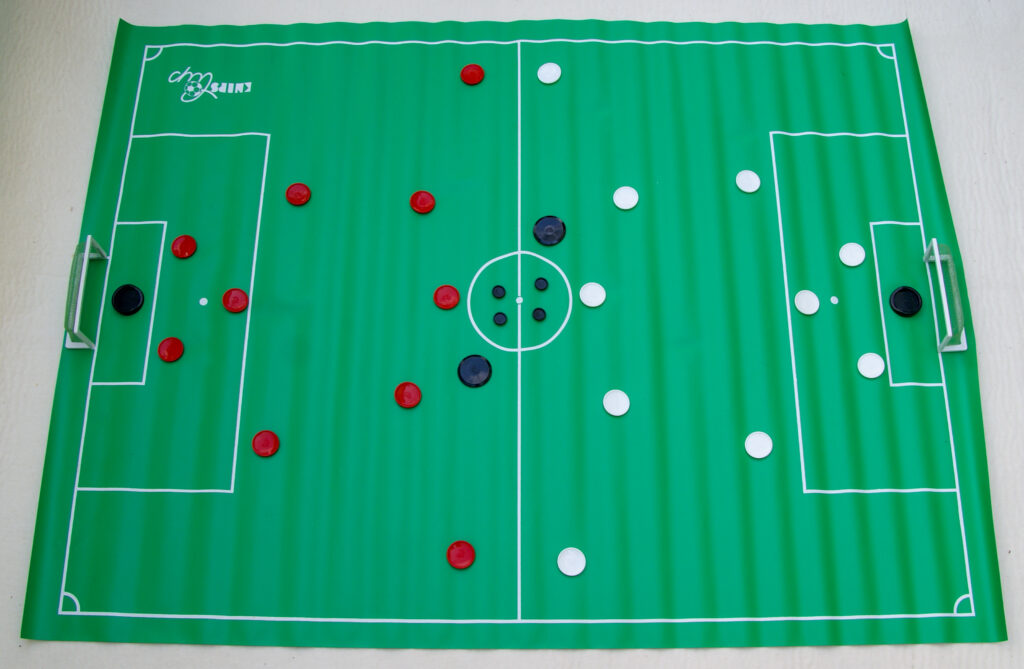
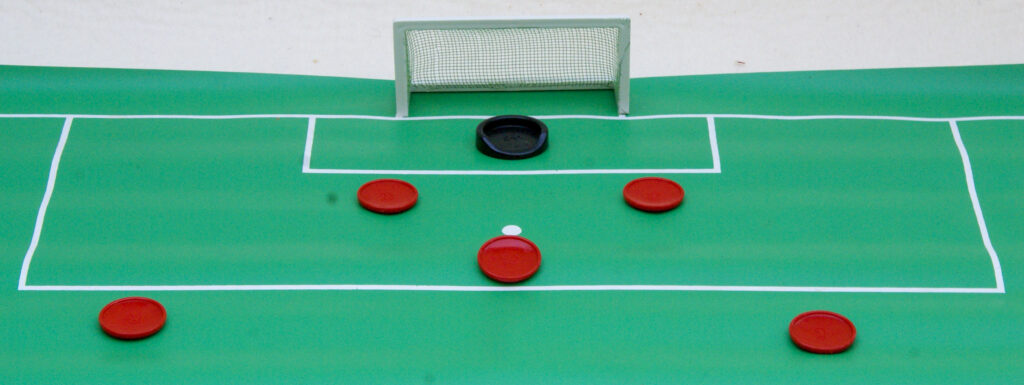
Contents
The playing surface is a replica of a football pitch. It is plastic and is rolled up for storage. It measures 27 3/4″ wide by 38 1/4″ long It is green with white sectional markings.
The 2 goals have metal mesh with white plastic frames both on the sides and top facing the pitch and along on the base sides and behind. Each measures 4 1/2″ wide, 2″ tall, and 1 3/16″ deep.
There are two sides, one with red discs and the other with white discs. The discs measure 1″ in diameter and about 3/16″ thick, with one side convex that includes an embossed number from 2 through 11, and the other side concave having a cursive “C” with a “K” overlapping it, as is also shown on the rules, representing “Knips-Cup”.
There are additional black discs. There are two sets of these discs. Each disc is 1 3/8″ in diameter. One has a thickness ranging from 1/16″ to 3/16″, though the interior has a constant thickness of about 1/16″. The other has a 1 3/8″ diameter and a 1/8″ thickness, with one side flat and the other concave resulting in a cursive “C” with a “K” overlapping it.
Additionally, there are 4 smaller black discs. Each measures 1/2″ in diameter and around 3/16″ thick. One side of each is rounded and convex. The other side of each has an outer rim around the circumference but is recessed inside of it.
Two blank scoresheets are included. Each has a section labeled “Paarung” at top left., with four empty rows below it, with a hyphen in the middle of each. The right two columns are labeled “Tore” and “Punkte”.
The next section below is marked “Tabelle”, and has 8 numbered lines below. Similarly, the right two columns are labeled “Tore” and “Punkte”.
The bottom section is marked “Nächste Runde”. There are four blank lines below it, with a hyphen in the middle.
At lower left is “KNIPS-CUP”.
Rules
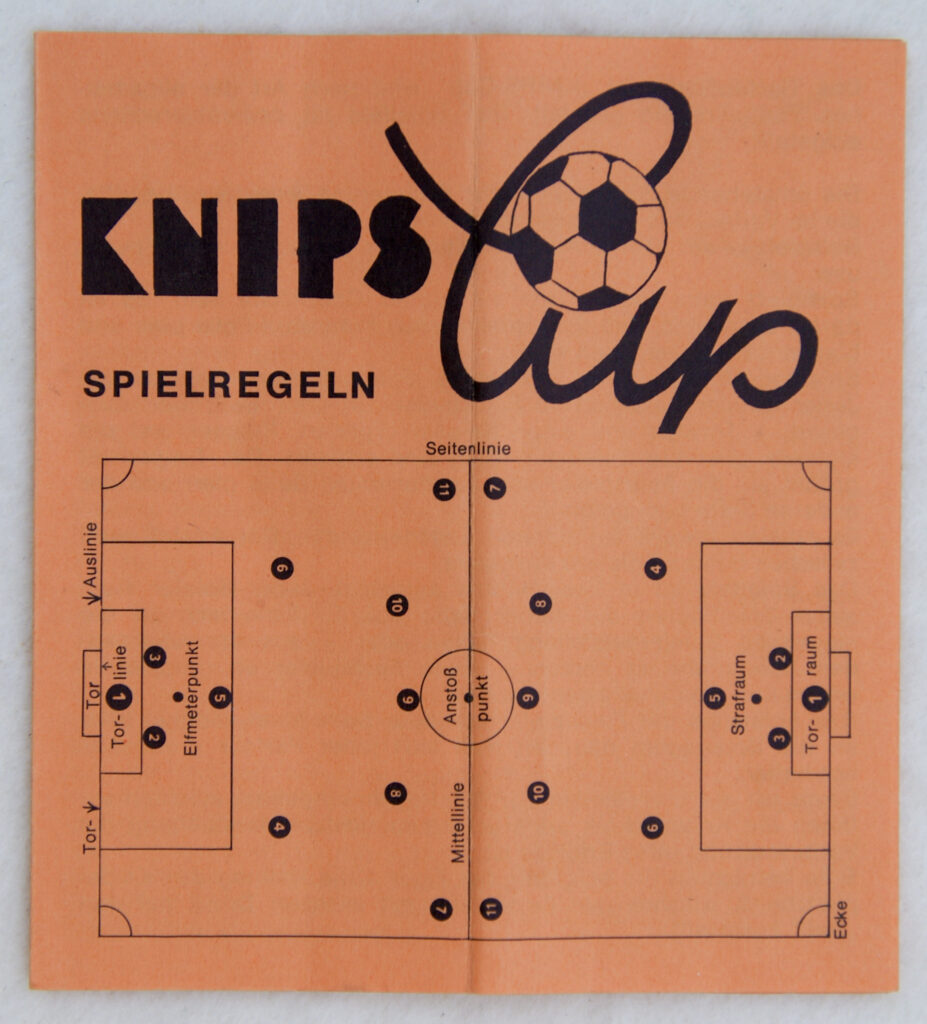
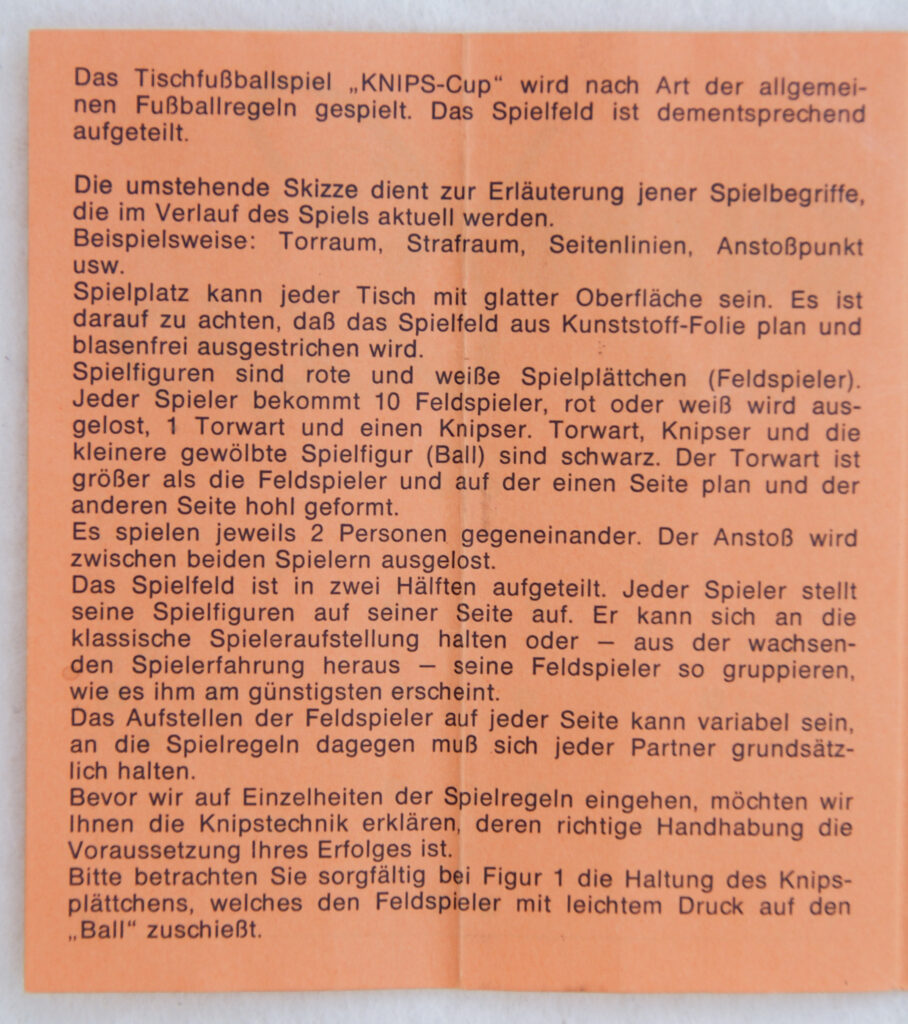
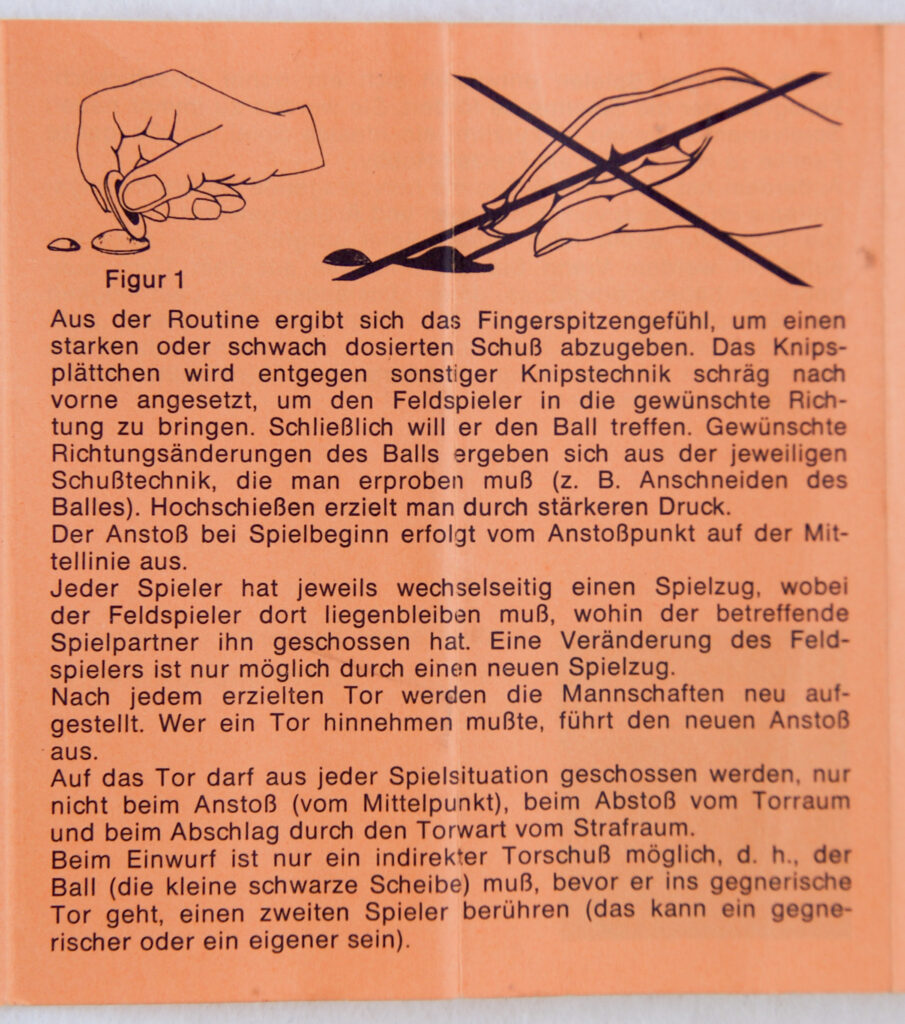
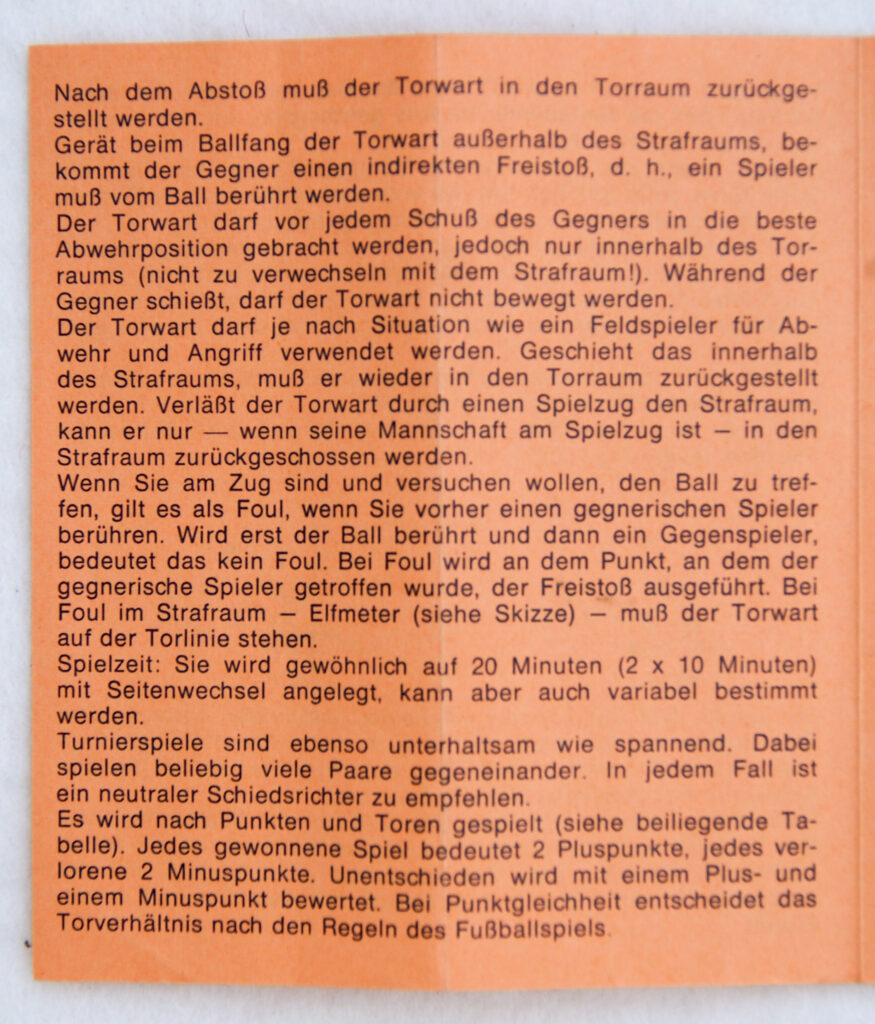
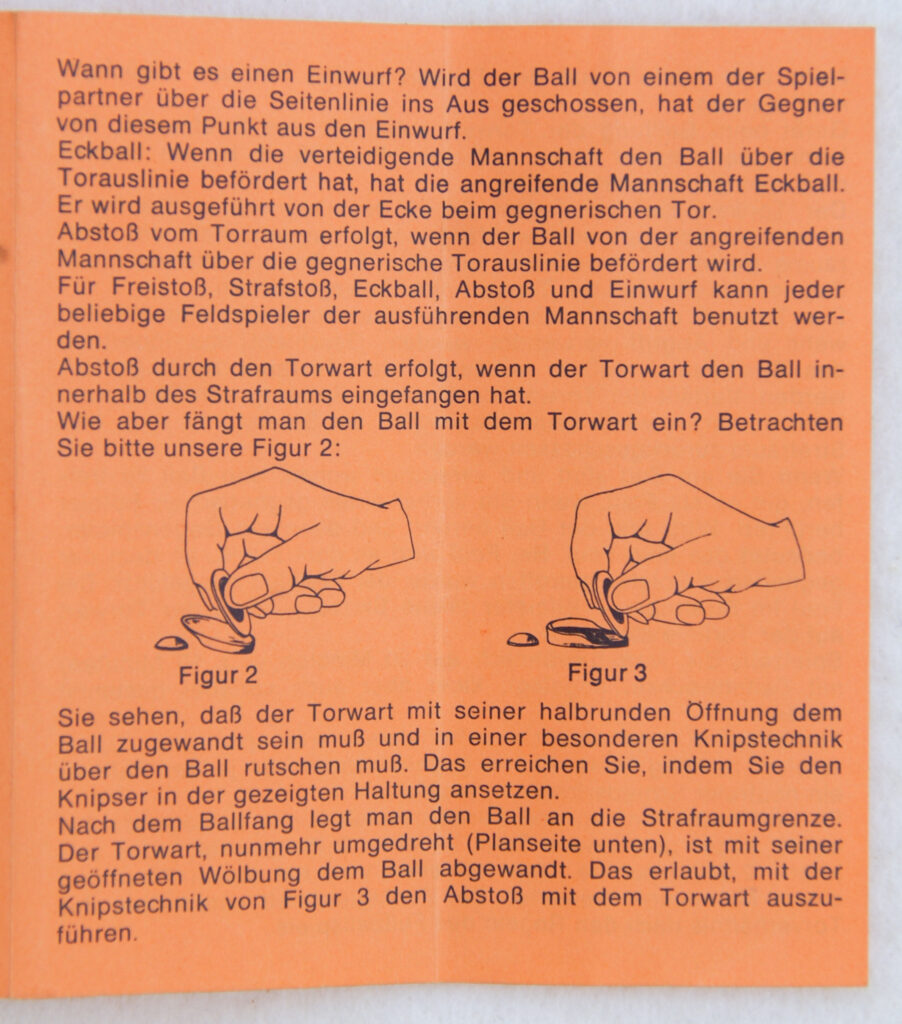
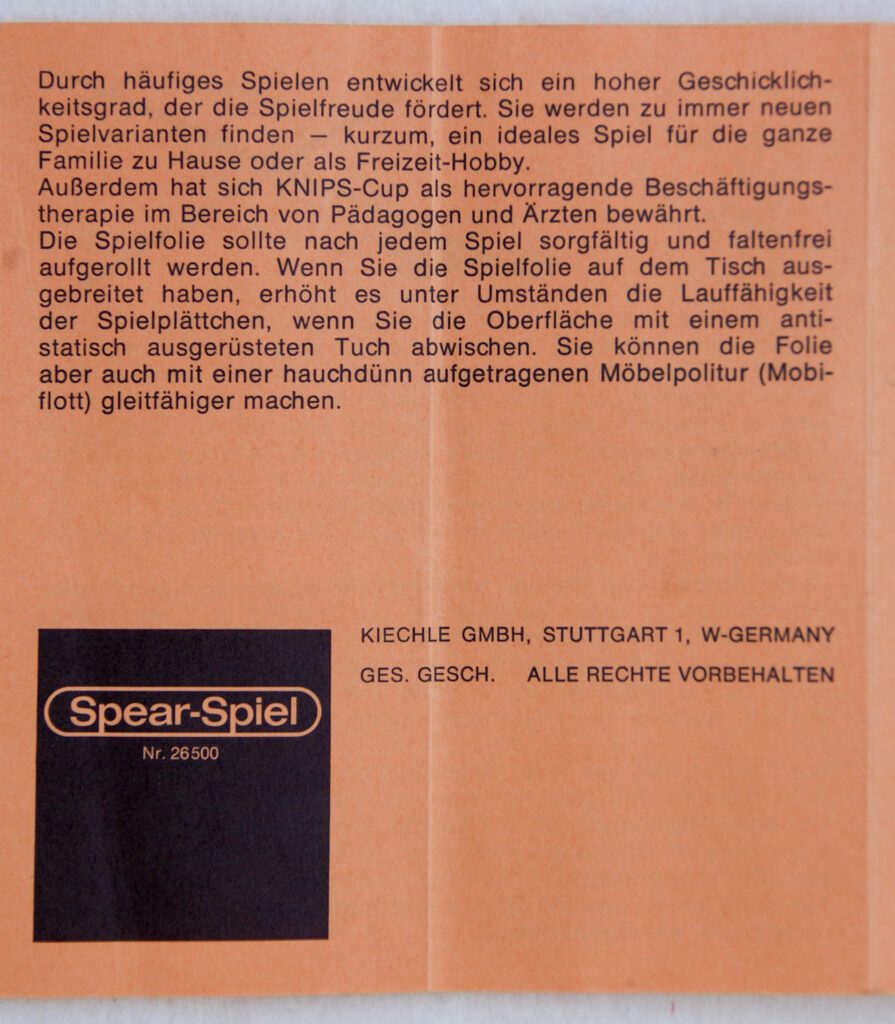
Advertisement
The game was an incentive on the occasion of the 1974 World Cup. That means we raffled the game off to retailers. For a chance to win, they had to send in a coupon that was part of an ad in trade magazines. In total there were about 5000 copies of the game.
Source • email from Bianca Kulik of the Ritter Sport company's Archives • to Rick Tucker • on 25 April 2023
The following advertisement for this game appeared in West German trade magazines in 1974. The coupon for retailers to send to Ritter Sport appears in the second image.
![[+template:(Tucker Tw ID • [+xmp:title+] — publisher • [+iptc:source+] — title • [+xmp:headline])+]](https://tiddlywinks.org/wp-content/uploads/2023/04/by-Spear-Spiel-title-Der-Ritter-Sport-Fusball-Knips-Cup-date-1974-twid-SPE-59-agpi-G-37848-ad-by-Ritter-Sport-source-Ritter-Sport-Archives-scan-1-1974-156-06-1024x726.jpg)
![[+template:(Tucker Tw ID • [+xmp:title+] — publisher • [+iptc:source+] — title • [+xmp:headline])+]](https://tiddlywinks.org/wp-content/uploads/2023/04/by-Spear-Spiel-title-Der-Ritter-Sport-Fusball-Knips-Cup-date-1974-twid-SPE-59-agpi-G-37848-ad-by-Ritter-Sport-source-Ritter-Sport-Archives-scan-2-1974-156-05-1024x726.jpg)
Umsatz mit Spaß von Ritter
1. Der Spaß für Ihre Kunden: unsere zur Werbung Fußball-Weltmeisterschaft.
2. Der Spaß speziell für Sie: Gewinne Sie eines von 5000 Knip-Cup-Spielen.
Sales with fun from Ritter
1. Fun for your customers: our football World Cup advertising.
2. Fun especially for you: Win one of 5000 Knip Cup games.